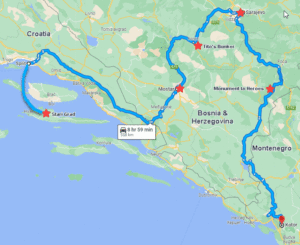
We took an early morning ferry from Hvar to Split and I’d hoped to catch a catnap in the car, but they put us in the bowels of the ship and you aren’t allowed to stay in your vehicle down there. The ramp into the ship’s hold was about the width of our car’s wheelbase (give or take an inch) and once all the little cars were in the hold, they dropped a metal plate shutting us in and loaded more cars above us – hence you cannot stay in your car as there is no ventilation (or escape)! From Split it is about a two-hour drive to Mostar, Bosnia and Herzegovina (BiH) and the wait at the Nova Sela (Croatia) / Bijača (BiH) border crossing was maybe 15 minutes. Our leased vehicle from Renault has a French license plate and I think the guard was disappointed when he greeted us in French and Howard replied in English.
Bosnia & Herzegovina, oh, my, where to begin. The ethnic divides in this country run deep and what follows is my very simplified version of its complicated history.
While the name of the country is often shortened to just Bosnia, Herzegovina has a distinct presence in the annals of history. It encompasses the southern tip of this triangular country and makes up less than one quarter of the land area. The Slavs began settling throughout the Balkans in the 7th century, and the area which would later become known as Herzegovina was settled with people from the Duchy of Croatia to the northwest, Travunija (Serbia) to the northeast, and Zachlumia (aka Hum) in between. By the end of the 15th century, the Turks were firmly in control of the area. Typically, the Ottomans listed newly acquired lands using the name of the conquered lord and, in this case, the land (with its Croat, Serb and Hum population) was owned by the Herzog of Hum – herceg is a germanic linguist holdover from 5th century Ostrogoths who migrated into the area as the Roman empire was collapsing, and translates as duke. The Turkish defters (tax registers) specifically list this region as Herzegovina (Duke’s Land).
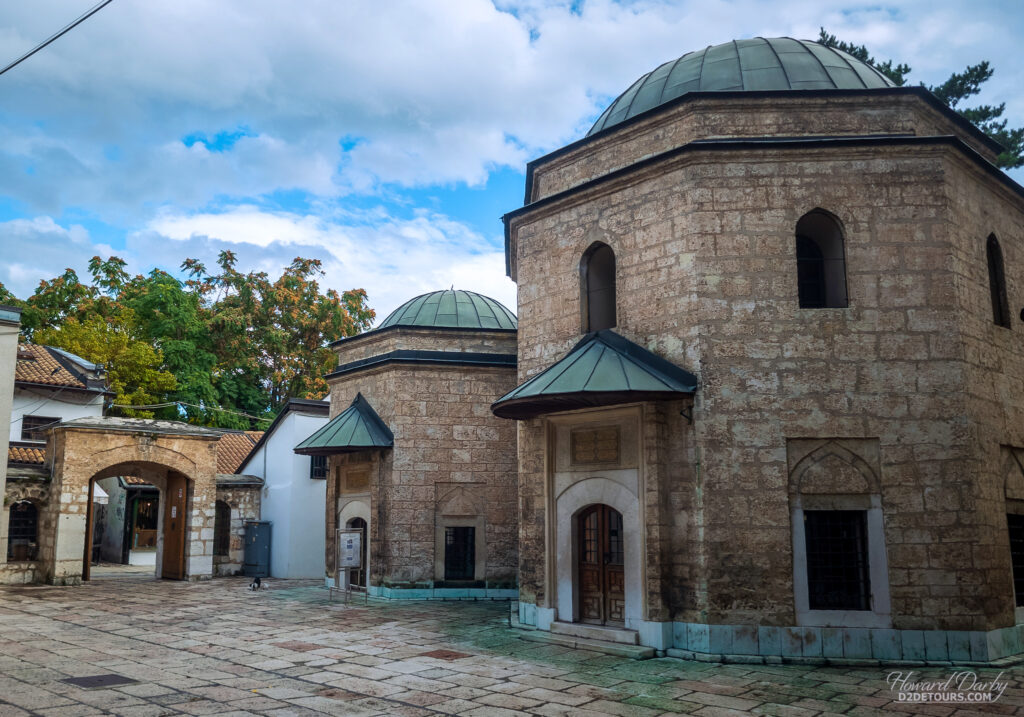
The Bosna river, which runs north from the spring of Vrelo Bosne near the outskirts of Sarajevo to join the Sava River (the largest tributary on the Danube), is one of the three major waterways in this region. Byzantine emperors in the mid-10th century made reference to the land of Bosona (“where the Serbs dwell”) which Serb nationalists often point to as proof of their ideology. During the Slav migration in the 7th century, Serb and Croat tribes settled, respectively, the eastern and western areas of the land. In the early 12th century, as the Kingdom of Hungary and the Byzantine Empire were battling each other for dominance in the Balkans, these Serb and Croat tribes slipped through the cracks and surfaced as the Banate of Bosnia. The Banate later became the Kingdom of Bosnia and was one of the strongest states on the Balkan Peninsula before their last king was captured and killed by the Ottomans in 1463 CE. Herzegovina fell to the Turks less than twenty years later.
Christianity was certainly present in this part of the world but not firmly entrenched and was generally split along ethnic lines – Catholicism in Croat dominated areas, Eastern Orthodoxy in Serbian areas and the Bosnia Church, the doctrines of which were considered heresy by the other two. Under Ottoman rule, only adherents of Islam could own land and/or property thus becoming a Muslim had significant appeal and by the 17th century the majority of the population was Muslim, with Sarajevo (Bosnia) and Mostar (Hercegovina) the regional centers of trade and culture.
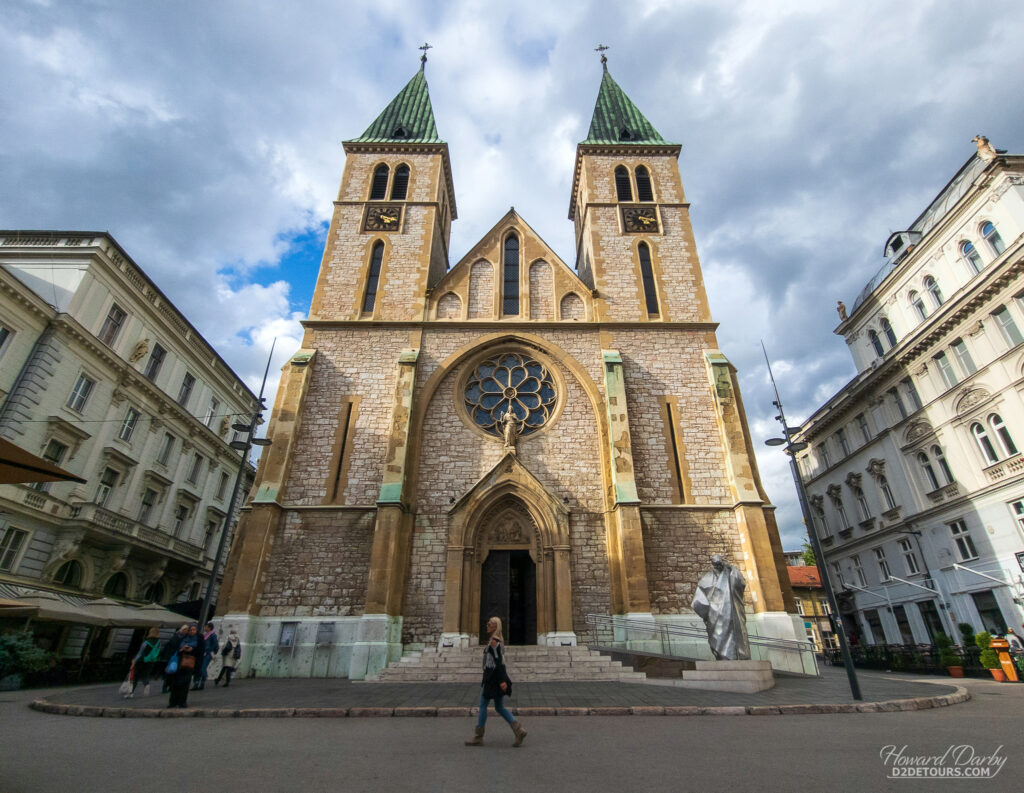
By the early 19th century, the Ottoman Empire was beginning to show cracks. Continuous conflicts with the Hungarian Empire to the north and the Venetian Empire to the west were taking a toll. The Muslim population of Bosnia & Herzegovina were constantly being conscripted to fight, and the minority Christian population felt they were being disproportionately taxed to pay for these wars. In 1875, the cracks broke open with Serb Christians in Herzegovina revolting. Unrest soon spread to Bosnia and the rest of the Balkans, culminating with the Russo-Turkish War (1877-78) where a Russian-led coalition of Balkan countries defeated the Turks. Following this victory, the six super powers in Europe at that time (Russia, Great Britain, France, Austria-Hungary, Italy, and Germany) together with the Ottomans and four representatives of the Balkan states (Greece, Serbia, Romania and Montenegro) met in Berlin to divvy up the spoils of war (the Treaty of Berlin). Bosnia & Herzegovina, while technically remaining under Turkish sovereignty, would be governed by Austria-Hungary, however, Austria took that “authority” one step further in 1908 by actually annexing BiH into its Empire. A 1910 census conducted by the Austrians, in their newly “acquired” region, listed land ownership based on religion as follows: Muslims (Bosniaks) – 91.1%; Orthodox Serbians – 6.0%; Croatian Catholics – 2.6% and others – 0.3%. The small, but powerful, Bosnia Serb population were incensed by the annexation of BiH and just a few years later saw to the assassination of Austria’s Archduke, and his wife, in Sarajevo; WWI ensued.
Following the Great War, BiH joined the Kingdom of Serbs, Croats and Slovenes. Despite Croats and Serbians being in the minority in BiH, these ethnicities wielded considerable political power when it came to defining rights and regions – Croat ideology revolved around regionalism while the Serbians espoused centralization and the Bosniaks just weren’t loud enough. In 1929, Croatia, Serbia, Slovenia, Bosnia & Herzegovina and Montenegro banded together as Yugoslavia (“Land of the South Slavs”) and an agreement was reached on new administrative regions that attempted to avoid ethnic divisions. However, the Serbs and Croats were not easily appeased and tensions continued until 1941 when Germany invaded Yugoslavia and the Slavs had bigger problems. The resulting fascist puppet state, The Independent State of Croatia (which included Bosnia & Herzegovina), began a targeted extermination of the Serbs, Jews, Roma (gypsies) and Bosniak Muslims within its borders.
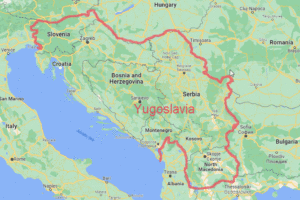
The Federal People’s Republic of Yugoslavia that emerged from WWII made the Republic of BiH, with its central geographic location, the base for its military defense industry. However, despite this large concentration of military arms and personnel, BiH (at that time) was relatively peaceful and prosperous, enjoying a high standard of living. Then, in 1980, President Tito died and the leaders who filled that vacuum began unpacking old ethnic baggage. For the next several years the role of President of the Presidency was rotated on a yearly basis between the Republics, beginning with Bosnia & Herzegovina. The Berlin Wall came down in 1989 and the Yugoslavian Republics saw their chance for real independence. In 1991, the Republics of Slovenia, Croatia and Macedonia formally declared their independence. The Serbian population of BiH favoured the status quo (remain as Yugoslavia) while Croats and Bosniaks overwhelmingly wanted independence, a division that was borne out in a February, 1992 referendum (boycotted by Bosnian Serbs) where more than 90% of the population that did vote, voted for independence. Bosnia & Herzegovina declared their independence the next month with international recognition following on April 6, 1992. That same day a militia of Bosnian Serbs declared their independence as the Republika Srpska and with support from the Serbian government (which still considered itself Yugoslavia) and the Yugoslav People’s Army (remember that stockpile of arms the government had centralized in BiH) began laying siege to Sarajevo. Bloodshed rapidly spread throughout the country. Between April 6, 1992 and December 14, 1995 over 2.2 million people were displaced, roughly 100,000 people were killed and countless people were injured, with the vast majority of those suffering being the Bosniaks. Man’s inhumanity to man was on full display during the 3-and-a-half-year long Bosnian War and ultimately Serbs, Croats and Bosniaks alike were convicted of war crimes by the International Criminal Tribunal for the former Yugoslavia. The Dayton Accords brought an end to the hostilities by establishing a single sovereign state known as Bosnia and Herzegovina that was further subdivided into the Serb-populated municipalities of Republika Srpska and the Croat-Bosniak-populated municipalities of the Federation of Bosnia and Herzegovina. A tripartite system of Presidents (Bosniak, Serb, Croat) now governs the country with the presidency rotating every eight months between the elected members. It is not viewed as a particularly effective form of government.
Dollars – We averaged about $144/day Canadian ($104 USD / €107) for our 6 nights in Bosnia & Herzegovina (2 nights in Mostar, 4 nights in Sarajevo) and ate several restaurant meals which definitely upped our daily rate. An average of $144 CAD/day works out to approximately $4,320 per month CAD ($3,133 USD / €3,226).
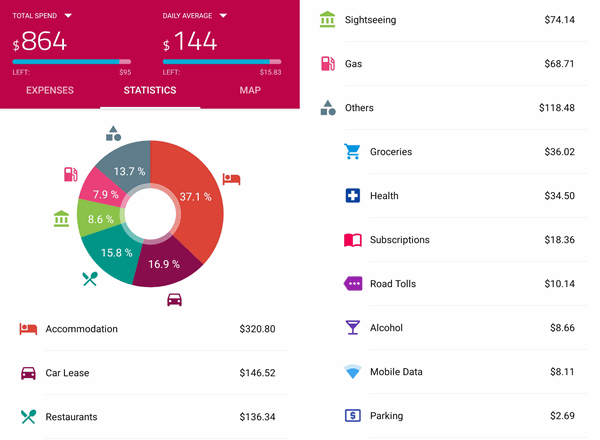
Environment – Our Airbnb in Mostar was a quintessential example of “don’t judge a book by its cover.” Dilapidated, rusty railings, graffiti (albeit nice graffiti), bullet holes in the concrete, and the kitchen wall (while it had been repaired) had been blown out by shelling during the Bosnian War, but the inside was great – modern, spacious, comfortable furnishings and only a couple of blocks from the historic old town. The host (and his sister) were super helpful with lots of restaurant recommendations.
In Sarajevo we stayed in an Airbnb up the hill from the old town in a completely residential section, much of which looked to be newly renovated/updated. Many of the Airbnb hosts in the Balkans have left us a welcome gift when we arrive at their unit, usually wine (yeah for me). This time our hostess left us a plate of freshly baked brownies and since Howard doesn’t drink I felt it only fair to leave “most” of the brownies for him. This was another very comfortable unit, with the only downside being the TV in the living room was an older model, without a USB port, so we could only use our Firestick in the bedroom TV.
Tips, Tricks & Transportation – There are toll roads in Bosnia & Herzegovina, although we only encountered two. The first one, right after we crossed from Croatia into BiH, had the exorbitant rate of $0.84 CAD and the second one, on the A1 motorway into Sarajevo, was free – this looked like a brand-new section of the motorway and the booths weren’t yet up and running. Generally speaking the secondary roadways (which we travelled from Sarajevo to the Montenegro border) weren’t in the best shape, but they had virtually no traffic at this time of year so if we crossed the center line to avoid a rough patch, it wasn’t a problem.

Out and About
Mostar
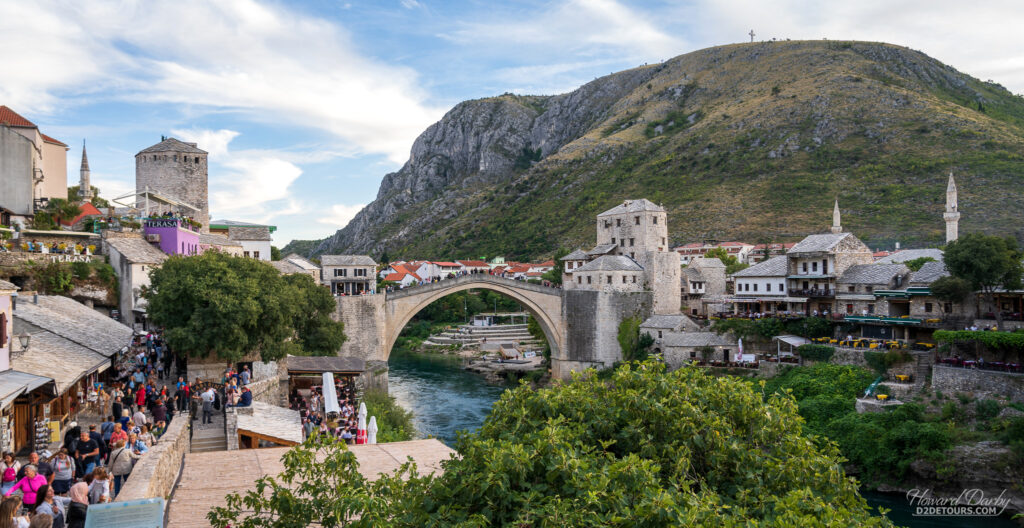
Perched above the Neretva River is Mostar, the historical capital of Herzegovina (Sarajevo is the modern capital of BiH). We availed ourselves of a free walking tour in Mostar, which was riveting. Our guide was passionate, to say the least, about his country and gave a very personal account of the Bosnian War. Of great importance to him was that we understand the War was not about religion (Catholic or Orthodox v. Muslim), it was about ethnicity. As a 17-year old he served with the Army of the Republic of Bosnia and Herzegovina during both Mostar sieges. During the first siege, in 1992, the Croatian Defence Council successfully sided with the Army of the Republic of Bosnia and Herzegovina against the Yugoslav People’s Army and the Republika Srpska. Unfortunately, just one year later, emboldened by their success against the Yugoslavian/Serbian forces, Bosnian Croats turned on the Bosniaks. Sometimes referred to as the war within the war, the Croat-Bosniak War was only settled a few months before the Dayton Accords ended all hostilities in the area, and left Mostar in ruins. The City has been rebuilt, but the scars are still very visible – bullet holes puncture building walls and bombed-out shells remain of many structures.
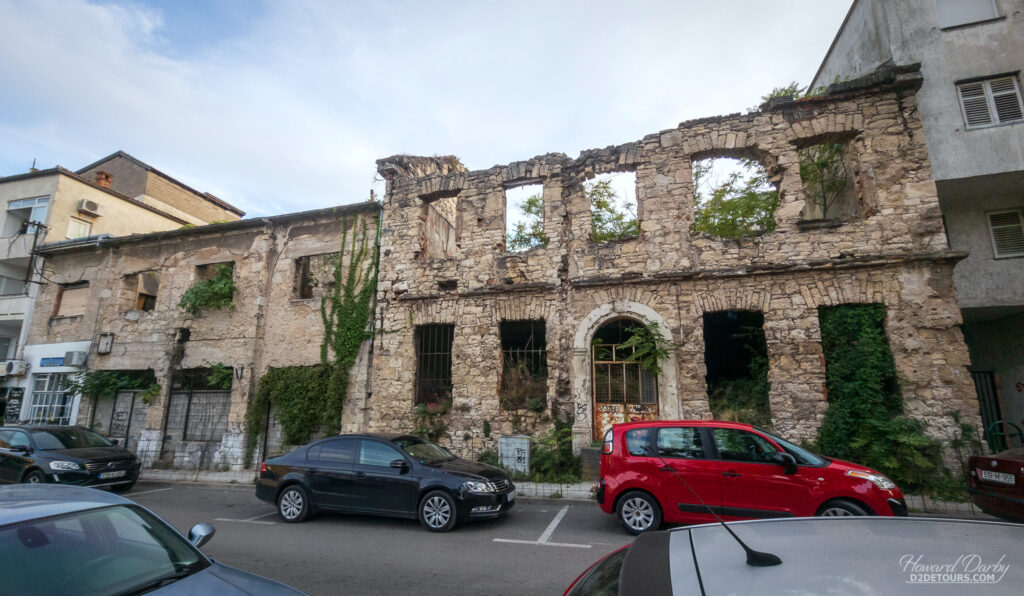
Rebuilding efforts are often hampered because ownership of many buildings is in dispute – they are “Yugoslavian” government buildings and no agreement can be reached on who should pay for repairs.
To hammer home our guide’s point about ethnicity, he had us stop in a small park, jam-packed with tombstones etched with dates from 1993, 1994, or 1995.

During the war snipers made it impossible for ANYONE to walk the streets in daylight, and in any event existing cemeteries were too far away, so under the cover of darkness the Bosniaks would bury their dead, of any denomination, in this little park, which is now a war memorial. Although the war has ended, the City remains divided with Boulevard Dr. Ante Starčevića acting as the border. Bosnian Croats live west of the Boulevard and Bosniaks live in the east and, according to our guide, as a local if you cross over to the “wrong” side you run the risk of being disowned by your family, or worse. As a tourist, honestly, I was oblivious to any animosity; Mostar has a lively vibe and it made me so sad to realize such resentment still bubbles below the surface.

Mostar isn’t just about bleak war stories, it was an important stop along the medieval trade route from Bosnia to the Adriatic and its name is believed to derive from the mostari, 15th century bridge-keepers responsible for the safety and upkeep of the wooden bridge over the Neretva River. Under Ottoman occupation, the Stari Most (Old Bridge) was replaced with a spectacular stone structure 28 m (92 ft) long and 20 m (66 ft) high that was considered an engineering marvel in its time.
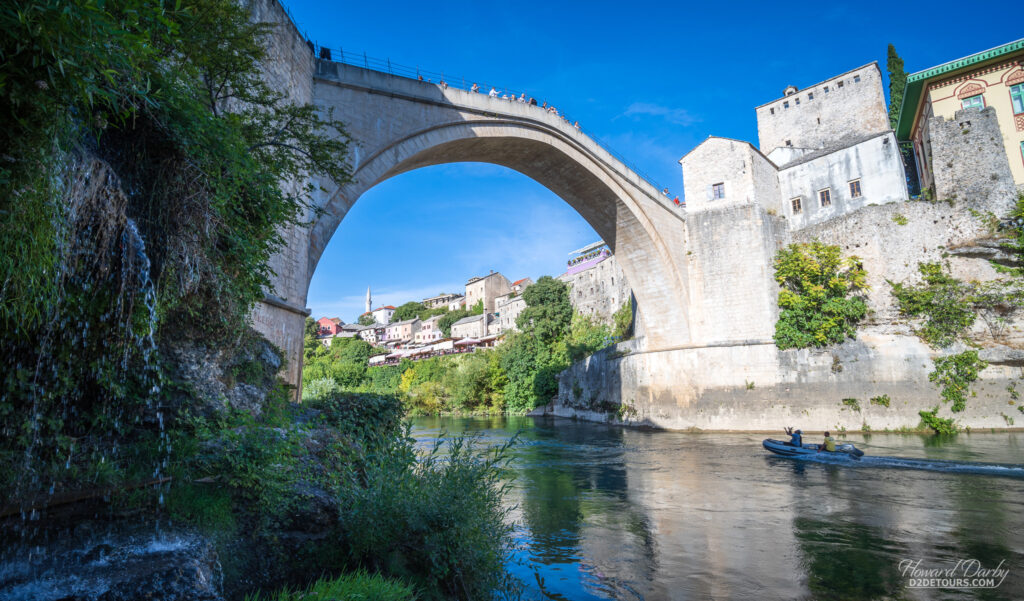
One 17th century traveller wrote that “the bridge is like a rainbow arch soaring up to the skies.” Destroyed by Bosnian Croat forces in 1993 it has been restored using as much of the original material as possible from the rubble strewn about the riverbank (and bed) below. It is striking and definitely needs to be viewed from the riverbank below to fully appreciate its lines.

But beware, constructed with polished limestone, the walking surface is slippery! Fortunately, crossbars have been added, so you can brace your feet as you walk up one side of the arched bridge and down the other.
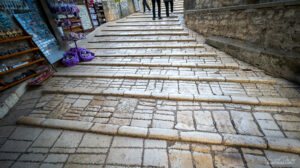
Speaking of slippery, the streets of the old town are paved with large, rounded pebbles which are brutally uncomfortable underfoot and in the rain are downright lethal.
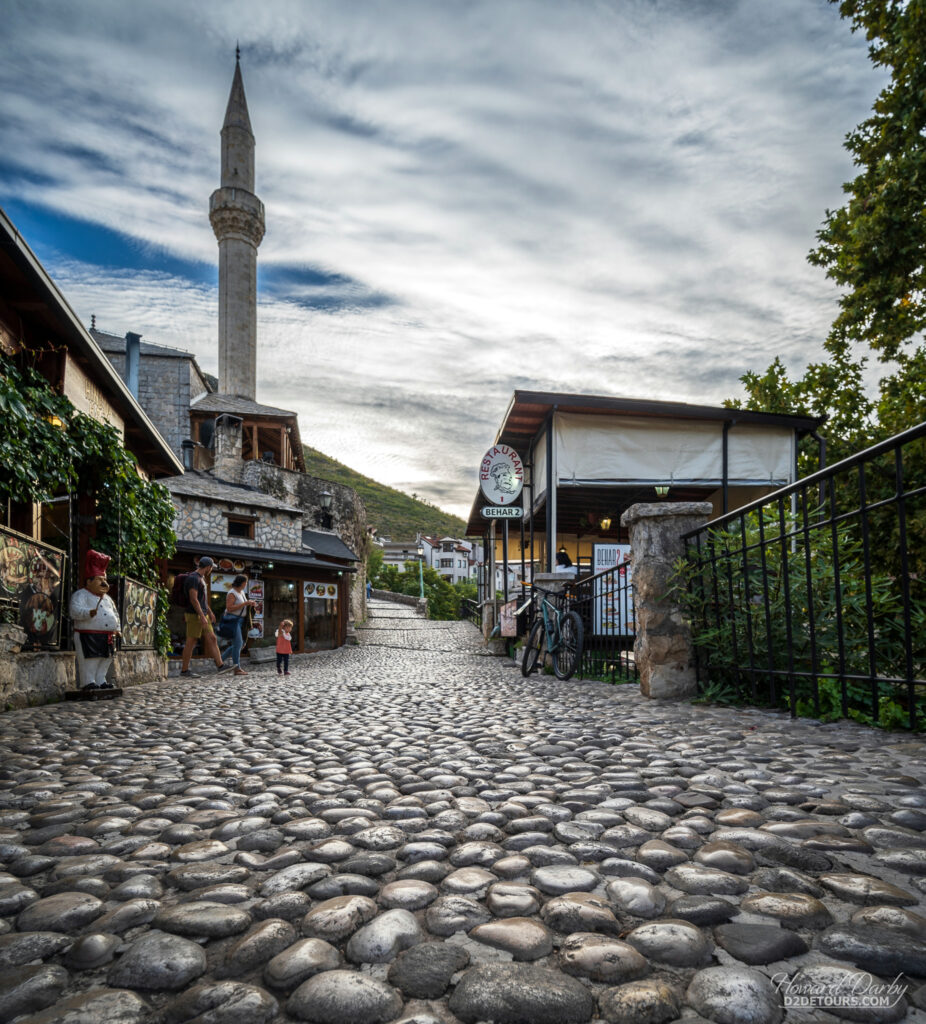
Not surprisingly, the narrow streets of the old town are lined almost entirely with souvenir shops and restaurants, but you can’t get to the Stari Most without first running this tourist-trap gauntlet and while the walkway might be treacherous, the buildings are very attractive with traditional Ottoman-style limestone roofs.

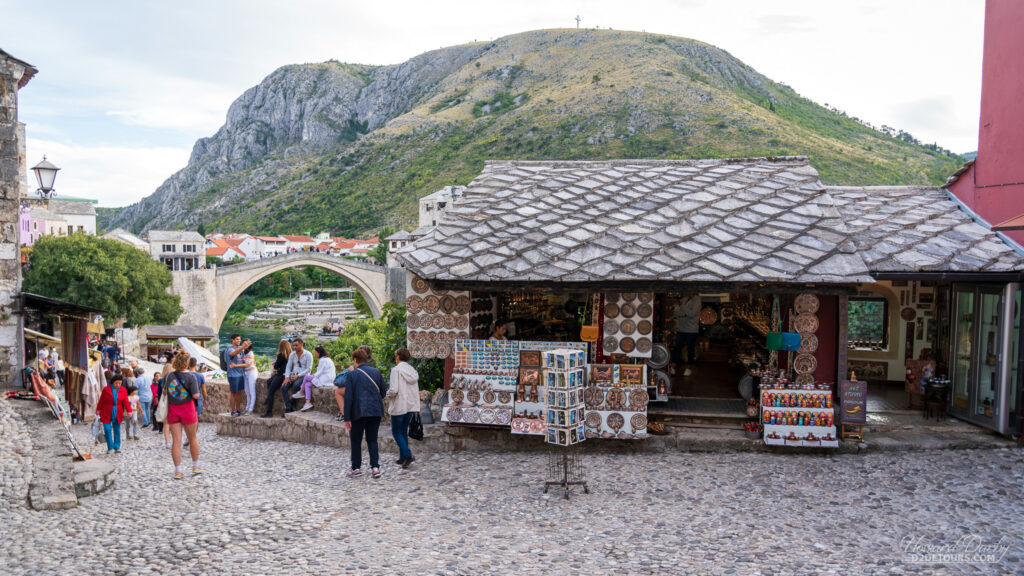
While the Stari Most is the big draw for tourists to Mostar just a few miles outside the City is the town of Blagaj, home to the Dervish House (Blagaj Tekija) and we thoroughly enjoyed the tranquility of this spot after our Mostar history lesson.
Tito’s Bunker
About an hour’s drive north of Mostar (enroute to Sarajevo), in the town of Konjic, is the Vojni Objekat Armijska Ratna Komanda ARK D-0, or more commonly known as “Tito’s Bunker.” With concerns over nuclear war, construction of this secret bunker began in the early 1950s and continued up until 1979 with the intended purpose of housing President Tito (and his wife) together with 350 members of his inner circle in the event of an atomic attack.
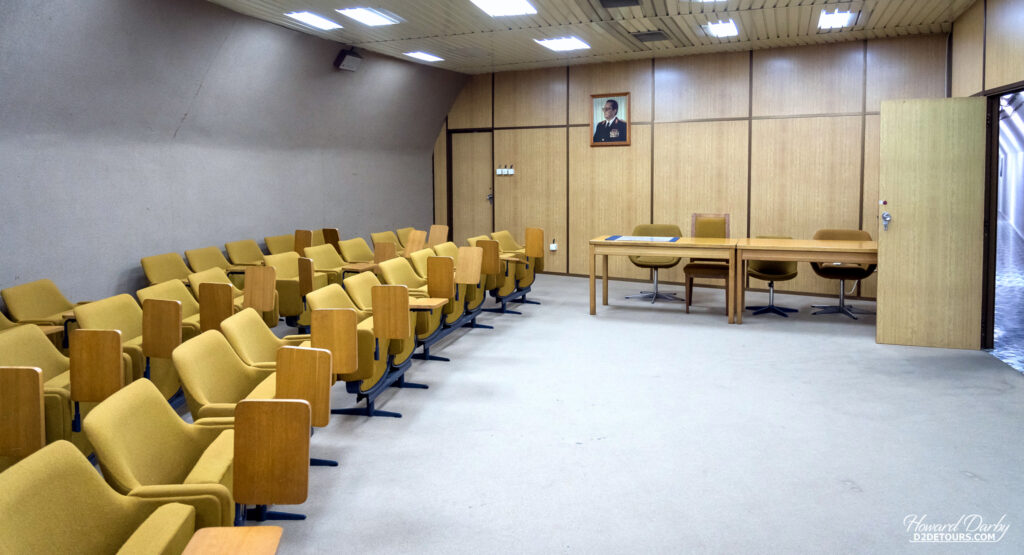
Even with a steep price tag of roughly $4.6 billion (US), it was not luxurious, rather the money was spent on state of the art technology.
Despite never being used, the Yugoslav People’s Army (JNA) stationed at the facility kept the bunker in pristine working condition. In 1992, in the early stages of the Bosnian War, the JNA gave orders to destroy the bunker but Bosnian patriots within the JNA quietly defied those orders ultimately surrendering it to the new government in 1995, who continued to keep its existence under wraps. It was not until 2007 that the general public became aware of the bunker’s existence when the government decided to turn it into a museum and artistic gallery space. It opened in 2011 and, in my opinion, is a weird mash-up of obsolete technology and art – call me a philistine, but I thought the art was just a distraction.
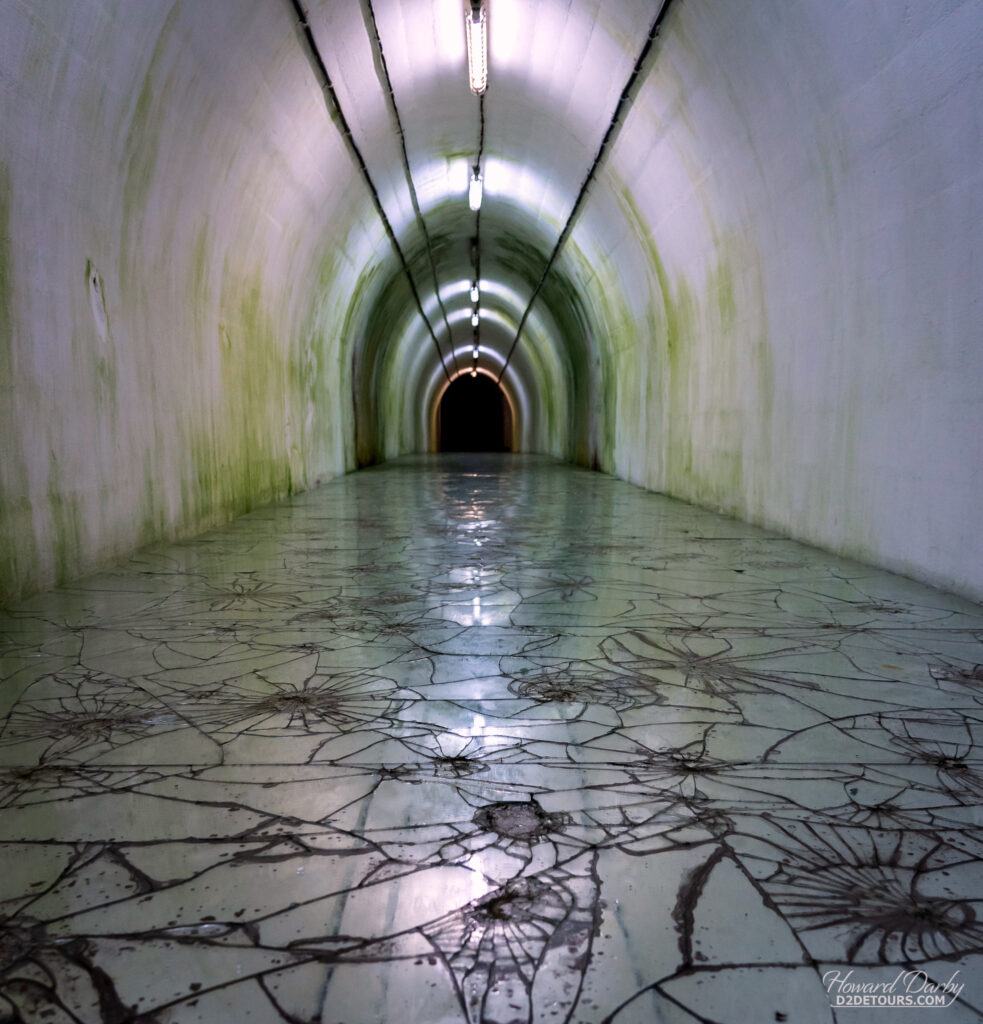
A visit to the bunker is definitely odd, it’s tucked away in the forest, with very small signs letting you know you’re on the right route. We drove to the bunker in a rainstorm which added to the surreal feeling. I came away from the experience thinking if I had to live day in and day out, underground, with the constant drone of the air-conditioner (and other life supports), I would likely go mad.
Getting a ticket to visit the bunker was a bit of an exercise. Despite its status as a museum, it is under the authority of the Bosnian Ministry of Defense, with a small military detachment on site. Tours only take place on Mondays, Wednesdays and Fridays at 10:00, 12:00 or 14:00. We understood you could get a ticket on site but arrived about 10:30 to find the gate locked and the distinct feeling we shouldn’t be there. Some information online indicated you could buy tickets at the tourist office in town (Konjic). So we drove back and did that (30KM/pp / $20 CAD), returning to the bunker entrance gate at 11:45 as you must be at the gate 15 minutes before the tour starts. We were asked if we had a reservation and handed over the proof of purchase from the Konjic ticket office. Once we got to the entrance to the bunker we discovered you could buy your ticket there for only 20KM/pp / $14 CAD – I do wonder what the guard at the gate would have done if we hadn’t shown him our reservation! I gather in the summer the bunker gets very busy (there were about 20 people on our tour) so buying your ticket ahead of time might be worthwhile, we just decided the extra $14 we paid was our contribution to the BiH tourism industry.
Sarajevo
Though there is evidence of an earlier settlement, in 1461 the Ottoman Empire founded Saraybosna (Palace of Bosnia) in the valley in the middle of the Dinaric Alps and began inviting Jews expelled from Spain to resettle there. This influx of people brought not only their religion but their language too, Ladino, a Romance language akin to Spanish. Although it has no official status it is still recognized as a minority language in the Federation of Bosnia and Herzegovina and signage, etc., display both Latin and Cyrillic alphabets (while signage in the Republika Srpska uses only Cyrillic). There weren’t just Jews in Sarajevo, the Turks built a bridge (Latinluk) over the Miljacka river to connect the Catholic quarter with the southern sections of the City. The north end of the Latinluk (Latin Bridge) later made its mark on history as the assassination site of Austria’s Archduke.
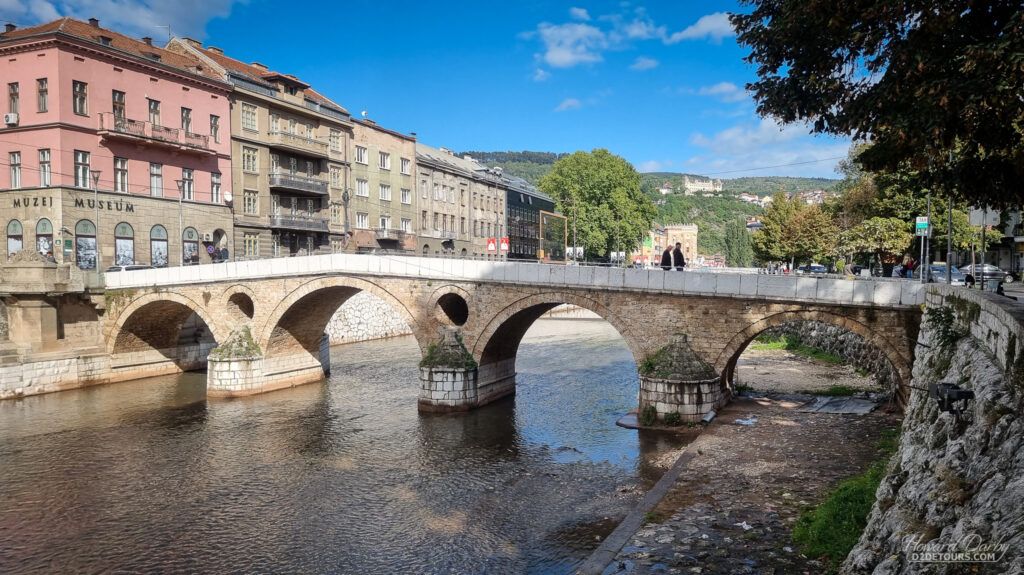
In WWII, while the facist government of The Independent State of Croatia was engaging in genocide, influencial Bosniak citizens in Sarajevo signed the Resolution of Sarajevo Muslims condemning the persecutions and demanding security for all citizens of the country, notwithstanding their ethnicity. Following the war, Sarajevo became the capital of the Socialist Republic of Bosnia and Herzegovina and in the ensuing decades vast amounts of government money were spent rebuilding and revitalizing the City with this investment paying off when Sarajevo was selected as the host city for the 1984 Winter Olympics.
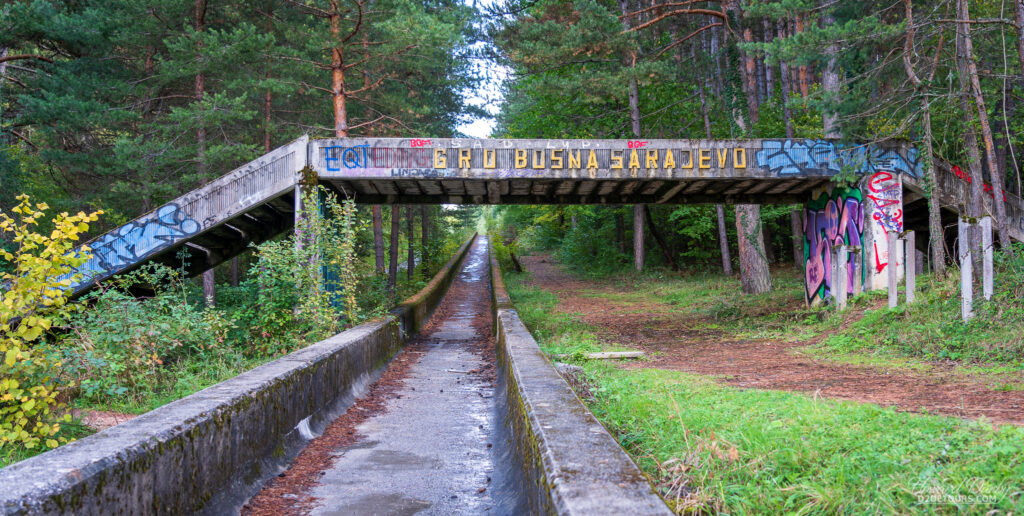
Sarajevo was booming during the 1980s, sadly the 90s erupted with a different kind of boom.
Beginning on April 6, 1992 and continuing until February 29, 1996, from the hills surrounding Sarajevo, the Republika Srpska and Yugoslav People’s Army rained down hell – the longest siege of a capital city in the history of modern warfare. Thousands of Sarajevans lost their lives during the constant bombardment and sniper activity. Walking the streets today you may come across a Sarajevo Rose – craters left by mortar shells have been filled with red resin and mark locations where at least three civilians were killed during the siege – there are 200 roses around the City.
Much like Mostar, bullet holes riddle the sides of many buildings but it’s obvious significant money has been spent rebuilding and I thought Sarajevo had the look and feel of a lot of other European cities, although there are some interesting remnants from its previous life.
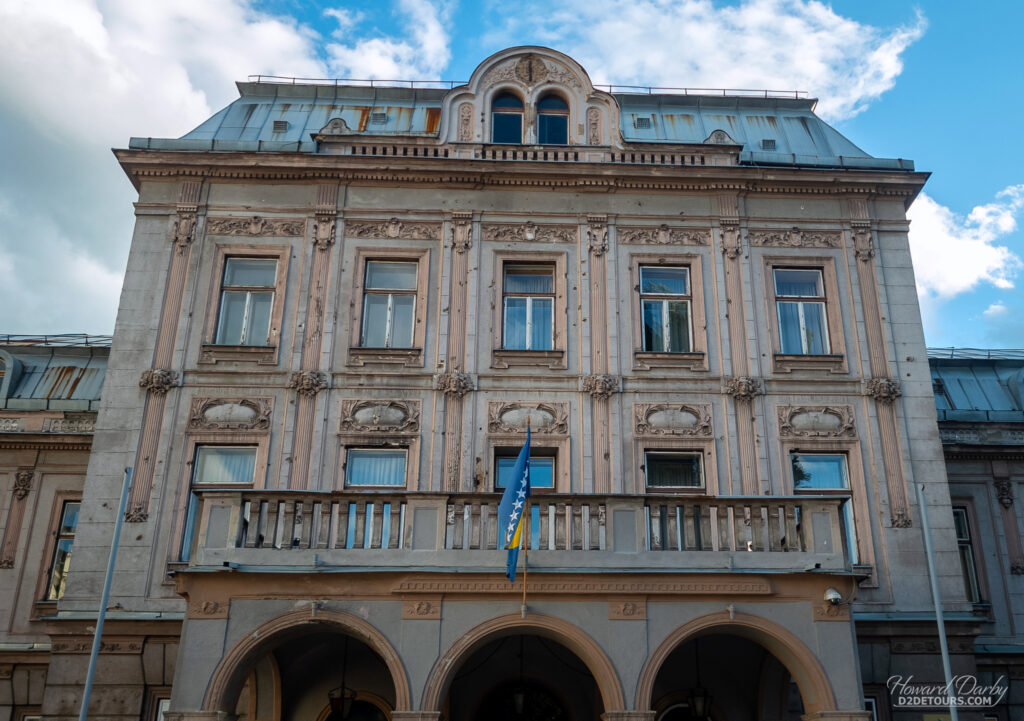
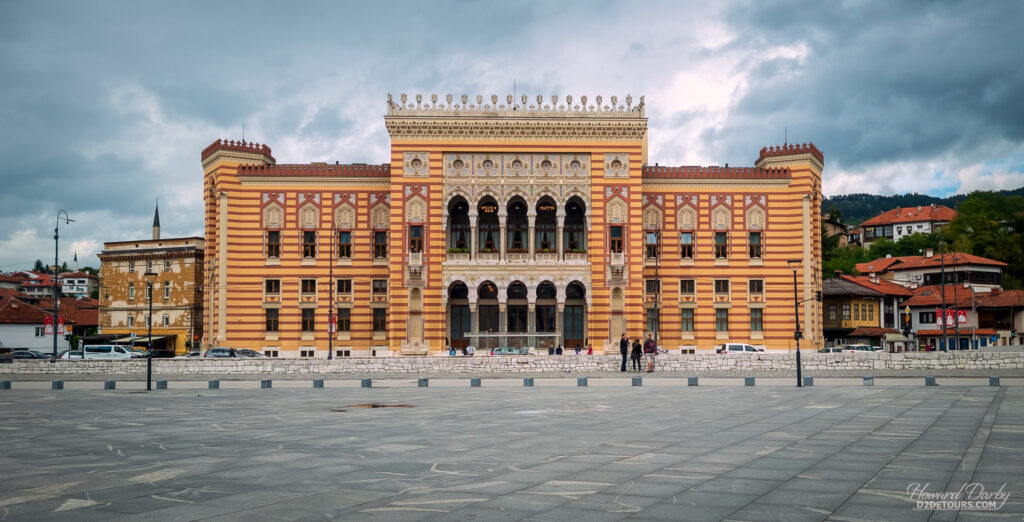
The Olympic bobsleigh and luge track was built on Trebević Mountain. A nine-minute ride on the Trebević Cable Car offers an amazing, birds’ eye view of the City and ends near the beginning of the old Olympic track.
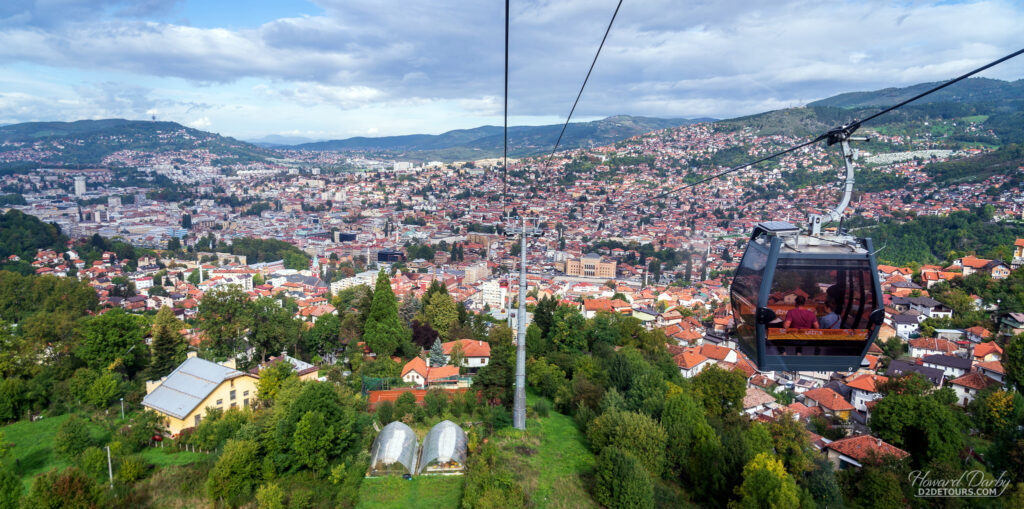
A round trip ride on the cable car is 20KM / $14 CAD or you can just ride it to the top for 15KM / $10 CAD and walk down on the remains of the bobsleigh track; that’s what we did.
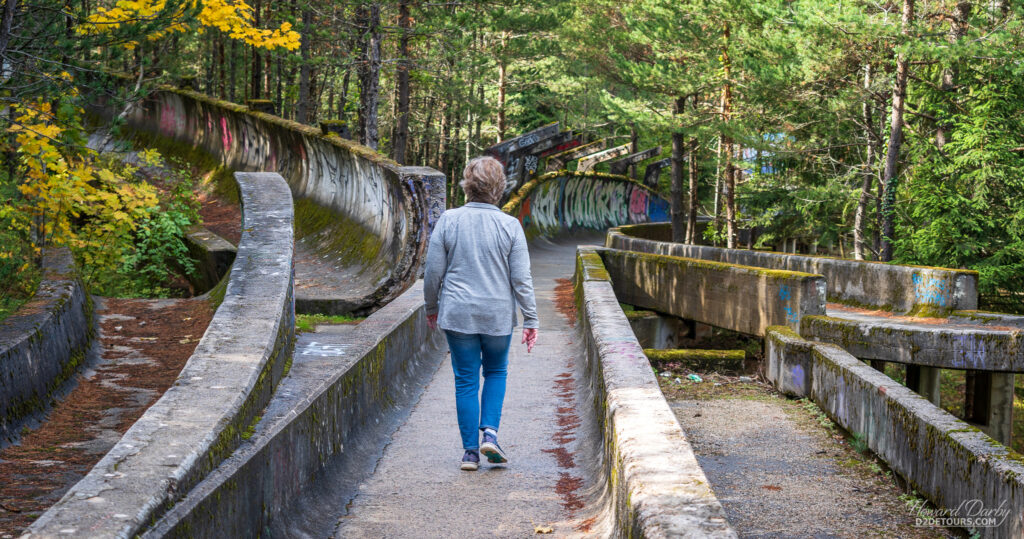
The old track has become a graffiti artists’ canvas and was really, really cool to walk. It measures 1,300 m (4,300 ft) in length with 13 turns and has a vertical drop of approximately 126 m (413 ft).
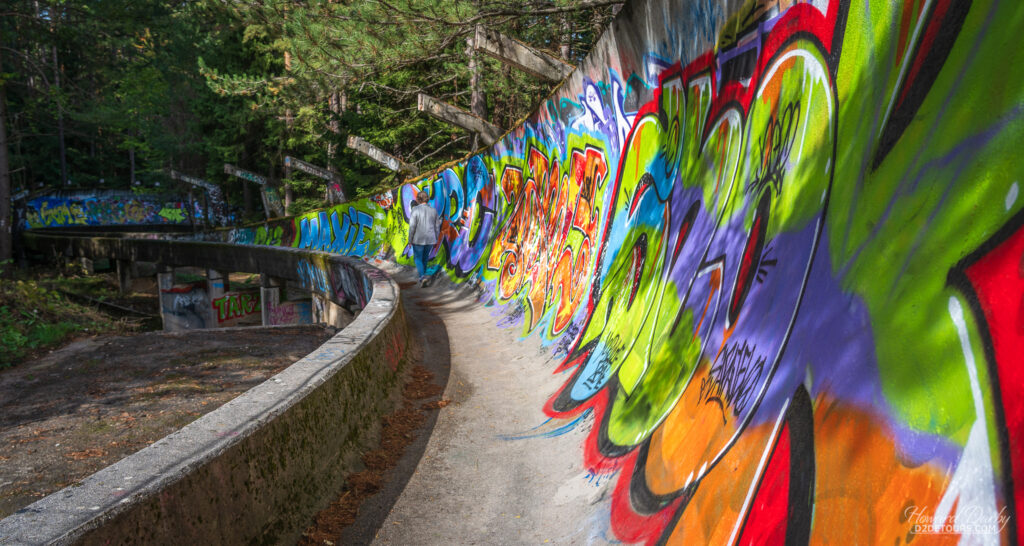
Nature is trying to reclaim the concrete structure and the Bosnian Serb forces did a little damage in a few places, but that just made it even more compelling to walk its surface.
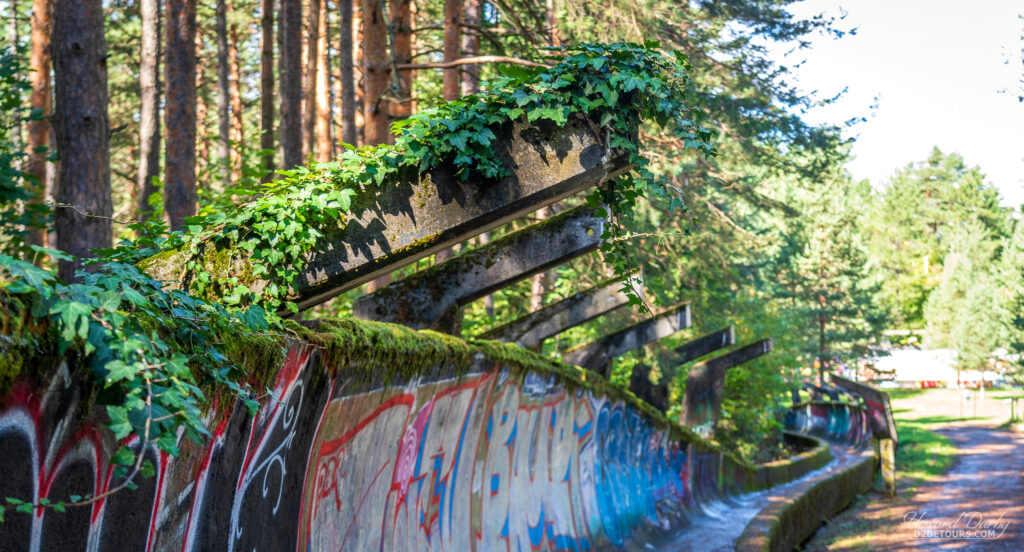
In hindsight, we should have walked back up the track and taken the cable car down as while the track meandered down a 126 m vertical, the walk from the end of the track back to the city center was nearly 3 kilometers (1.86 miles) of what felt like a sheer vertical drop, by the end of which my knees were screaming and it was all Howard’s fault. Before we started our painful trek down the mountain, we walked up a slight rise from the bobsleigh finish line to an old abandoned watchtower and observatory – Bistrik Kula. Originally erected as a watchtower by the Austrians when they were governing the area in the early 1900s, it lost any military value following the second world war and was handed over to the Orion Astronomical Society, who added an observatory. Regrettably, all of it was damaged during the Bosnian War and lack of funding has prevented any restoration.
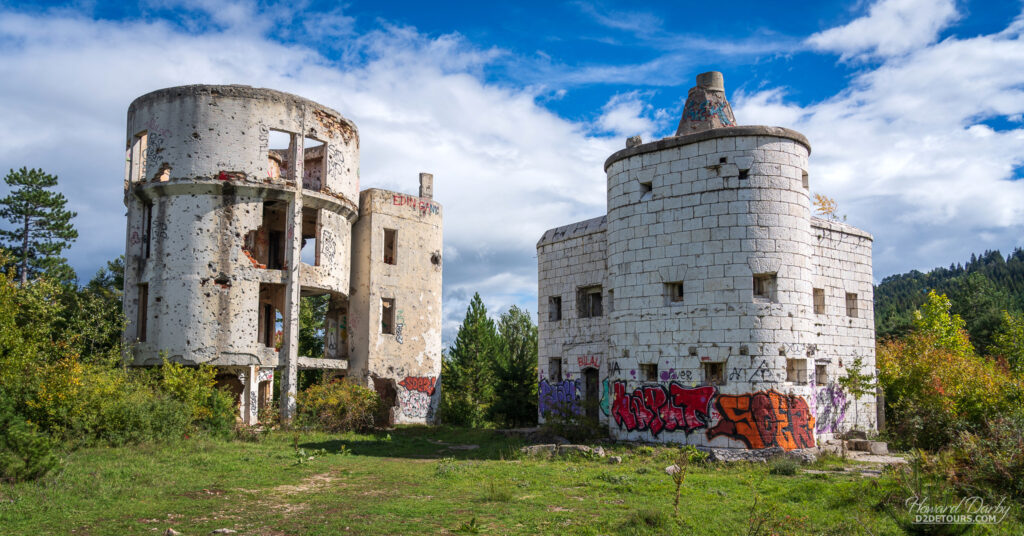
Heading to Montenegro
We drove about 100 kilometers (62 miles) south of Sarajevo to the village of Tjentište and the Valley of the Heroes. The countryside was bright with autumn reds and golds and simply beautiful.
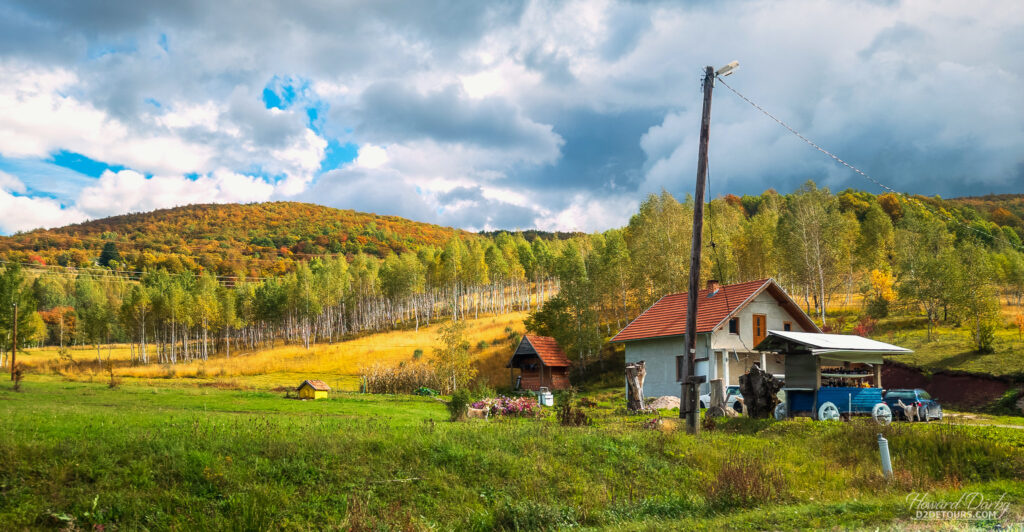
The monument at the Valley of Heroes commemorates the 1943 Battle of Sutjeska where Yugoslav Partisan forces (an anti-fascist resistance movement) under the command of Josip Broz Tito battled advancing German forces. The Partisans suffered massive losses, but the Battle proved to be a turning point for the war in Yugoslavia and the rebels continued to push the Germans out of the region. The Partisans are considered one of Europe’s most effective anti-Axis resistance movements and I have a slightly better understanding now as to why the Yugoslavian people revered Tito as a national hero.
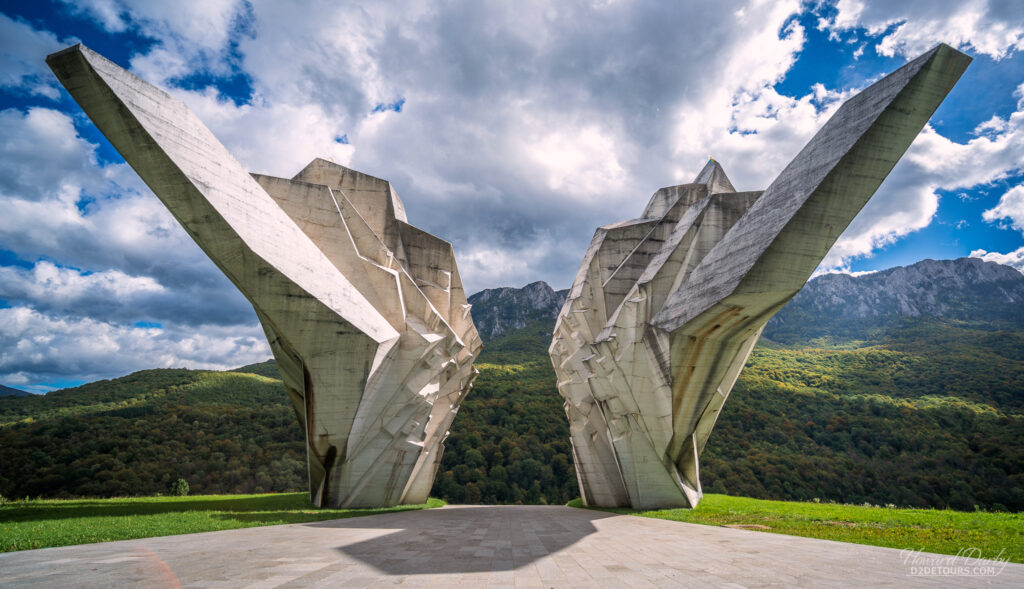
Us (our thoughts on the area) – I was somewhat apprehensive about going to BiH. I was afraid it would be incredibly depressing and we’d read some alarming stories about shake downs on the highway, but none of my concerns came to fruition. We had zero problems on the highways, byways or city streets – perhaps because we were driving a foreign car with a French license plate rather than just a rental with local plates, and a visit here is sobering indeed, but not depressing, enlightening might be the right word. Off to Montenegro!
Restaurants – We really enjoyed dining at Restoran Dveri. Pleasant atmosphere and the most delicious homemade bread! We also tried their cornbread with ajvar (roasted red pepper and eggplant spread). I really liked the ajvar, but the cornbread was baked with chunks of cheese mixed in and then served cold, which was kind of strange. Their goulash with homemade gnocchi and plums was yummy too. I confess we ate here twice and both times our bill (including drinks and a tip) was under $45/CAD.
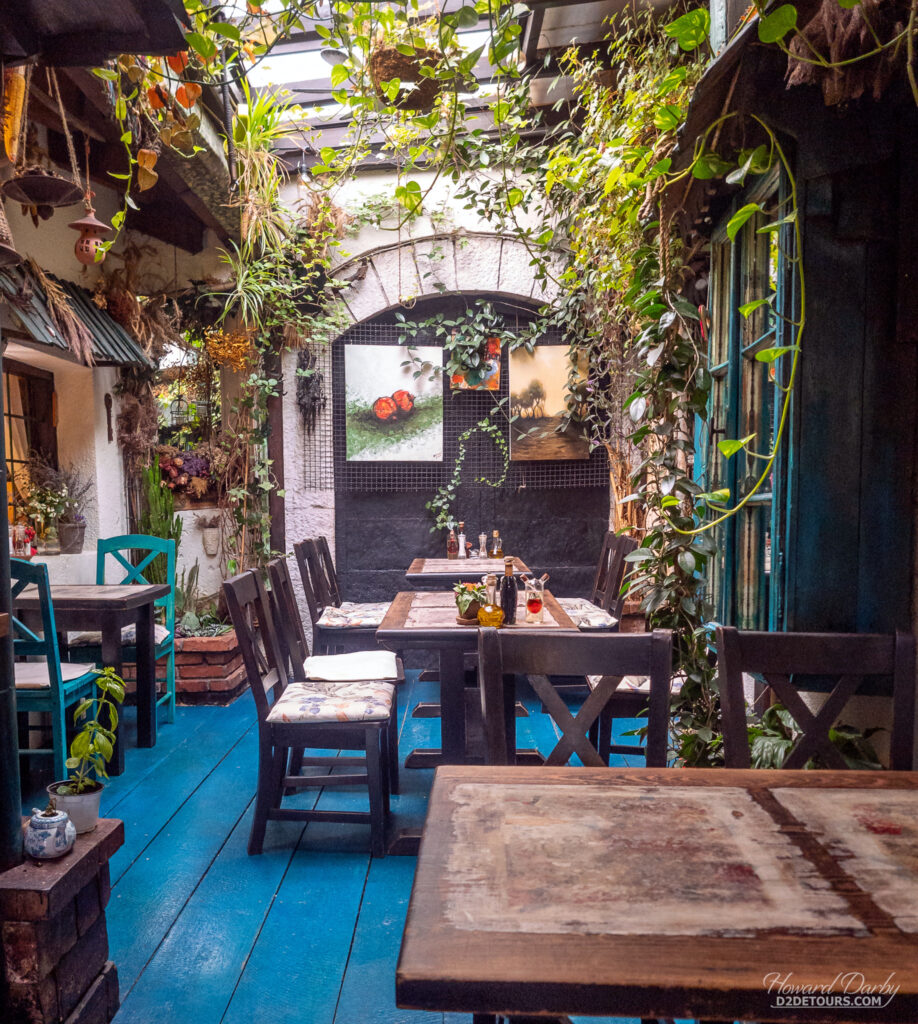
Ćevapčići (chuh-vap-chee-chee), ćevapi for short, is considered a national dish of BiH. Ground (minced) beef seasoned with paprika and garlic is shaped into small sausages and grilled, then served with lepinje bread (almost like a pita) and onions. It’s very simple fare, but quite tasty, and cheap – $6.50 for 5 pieces, which is plenty.
Speech – The official languages of Yugoslavia were Serbo-Croatian, Slovene and Macedonian, with most of the population speaking Serbo-Croatian. When Serbia, Croatia and BiH declared their independence from Yugoslavia they stopped speaking “Serbo-Croatian, ” and Serbian, Croatian and Bosnian, respectively, became official languages, however these are all just regional versions of Serbo-Croatian – there’s that deeply-rooted nationalism again. Fortunately you’ll have no trouble being understood when speaking English.
- Dobar Dan (do-BAR dan) – Good Day;
- Zdravo (ZDRAH-voh) – Hi;
- Dovidenja (doh-vee-JEH-nyah) – Goodbye (Ciao works too);
- Molim (Mo-leem) – Please;
- Hvala (hVah-lah) – Thank you;
- Da / Ne – Yes / No;
- Izvini (EEZ-vee-nee) – Excuse Me;
- Pričati li Engleski? (PREE-cha-tee lee EN-gles-kee?) – Do you speak English?
- Ne razumem (neh rah-ZOO-mem) – I don’t understand;
- Koliko je košta? (KOH-lee-koh ye KOH-shta?) – How much does it cost?
- Račun (RAH-choon) – Bill (in a restaurant);
- Izvinite (EEZ-vee-nee-teh) – Sorry.
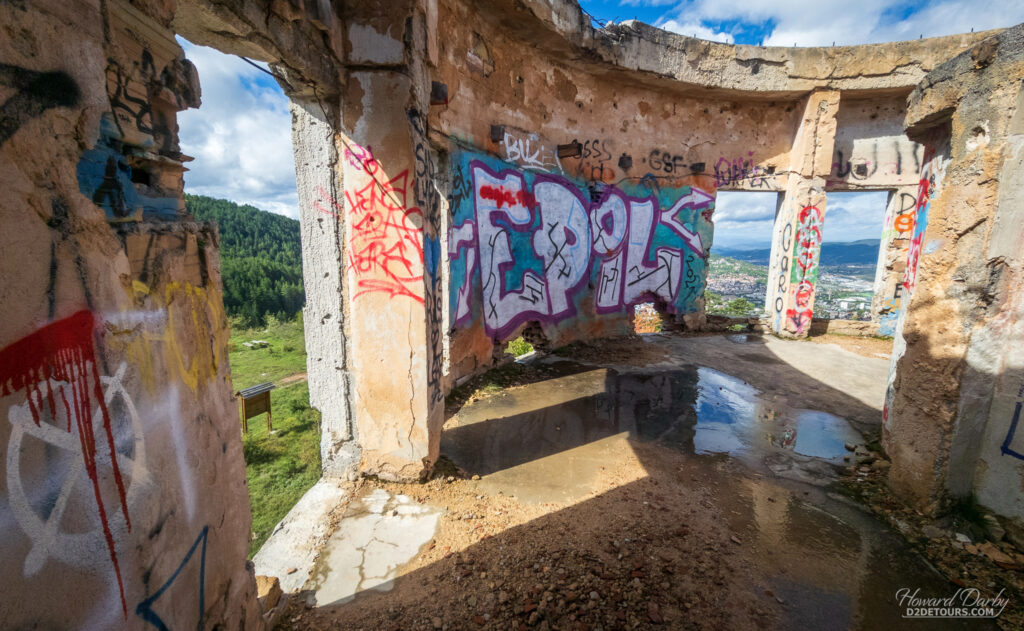
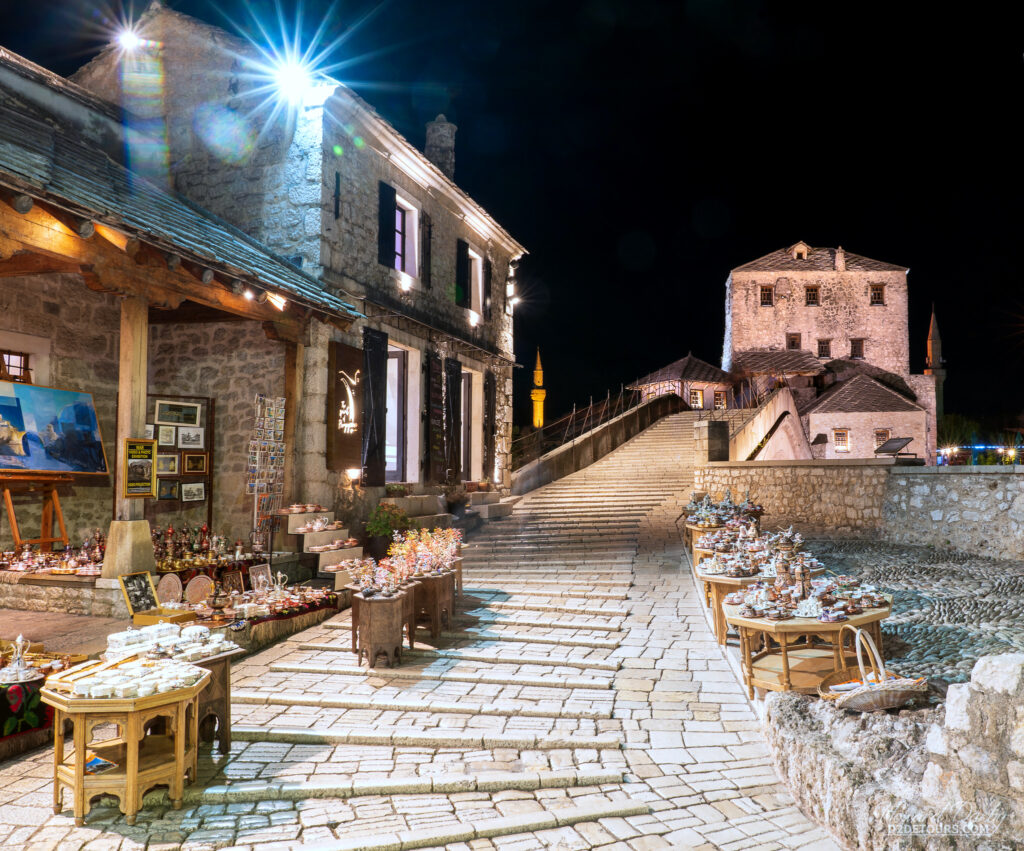

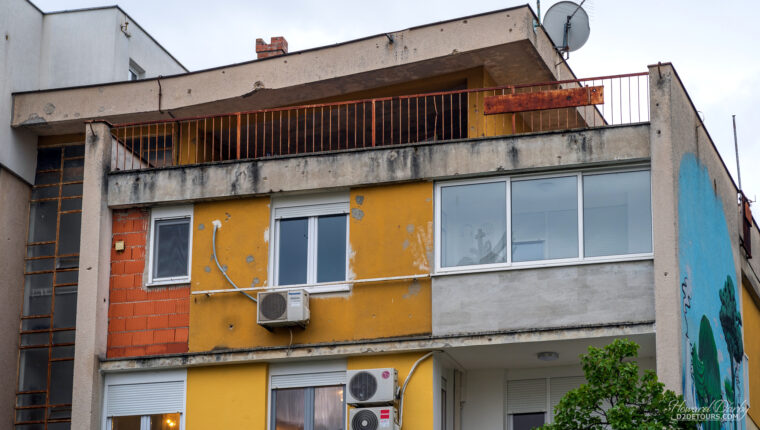
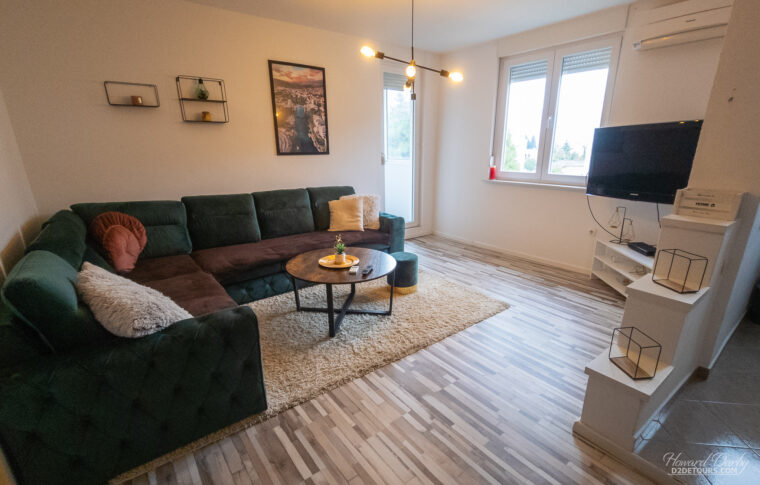
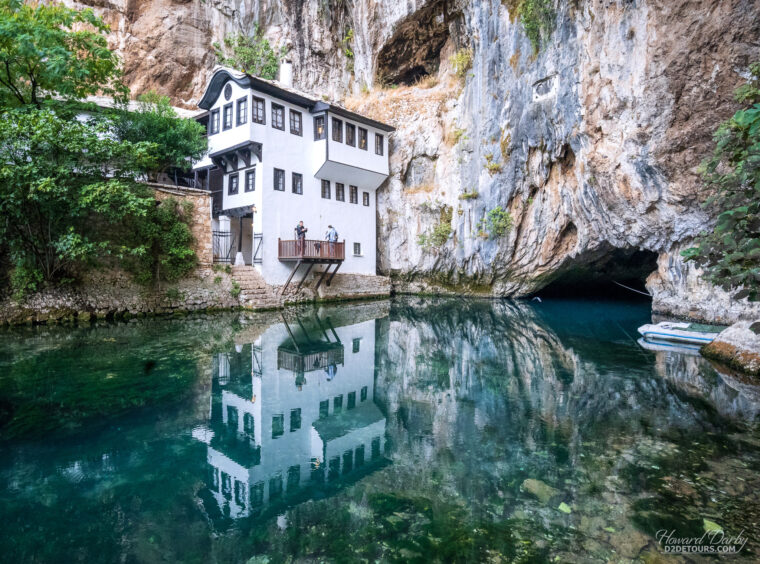
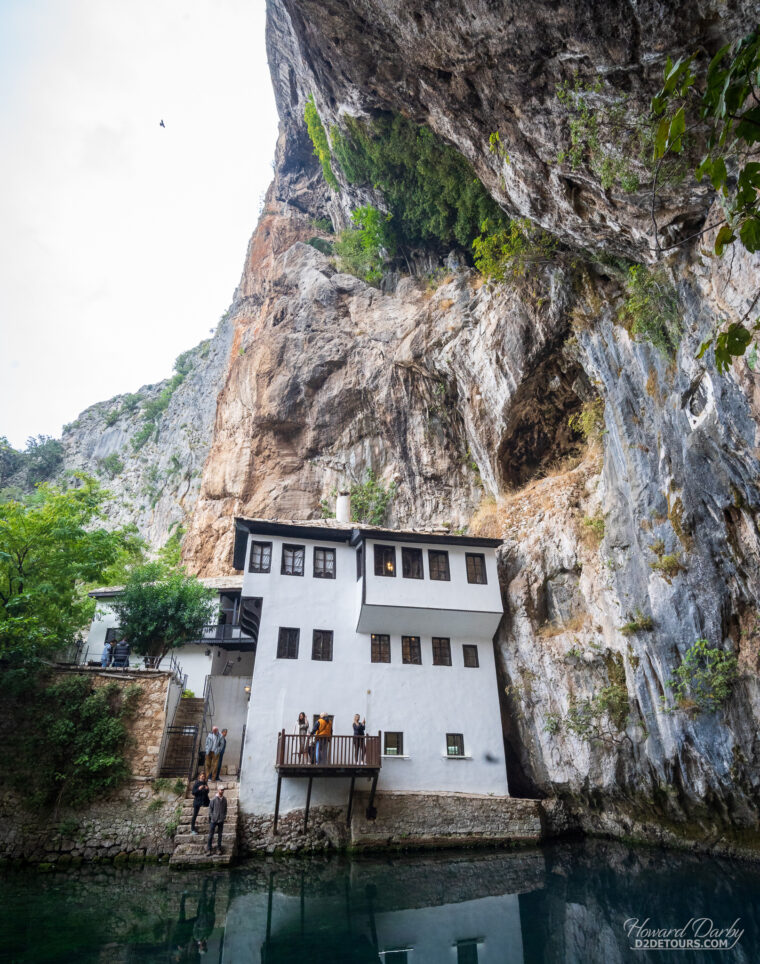
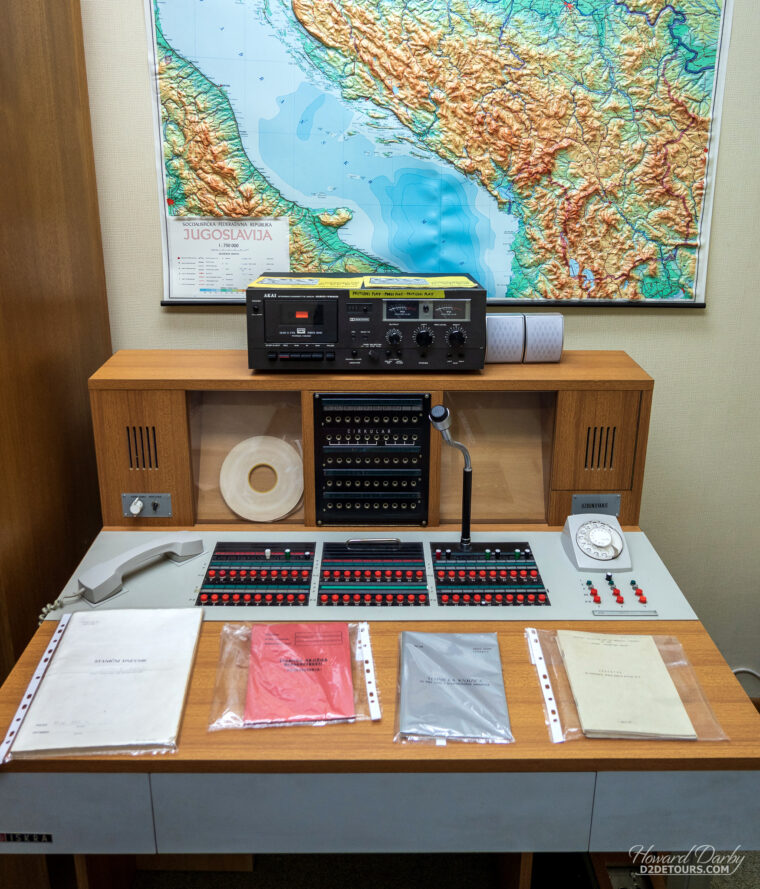
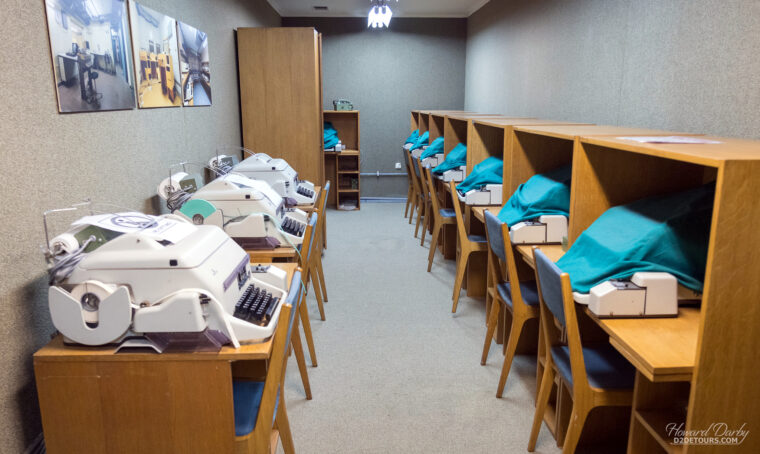

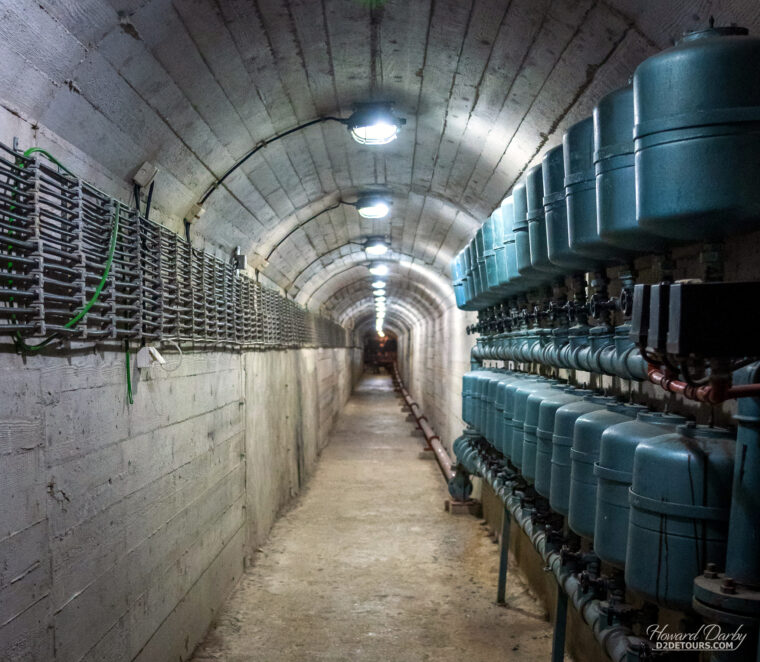
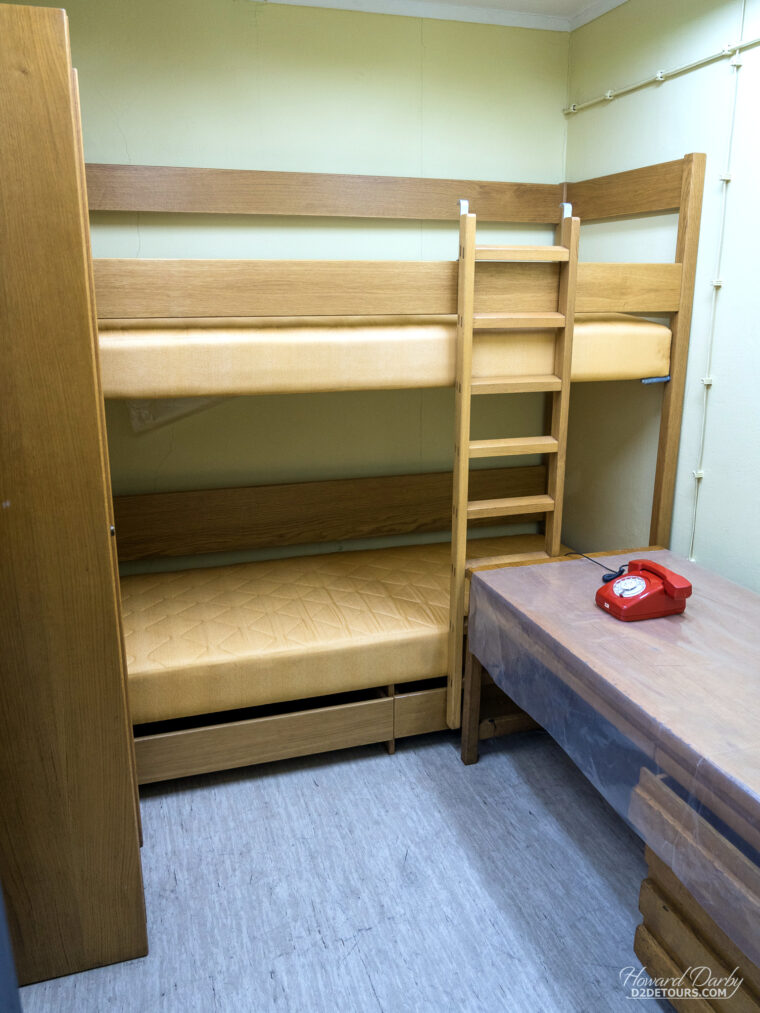
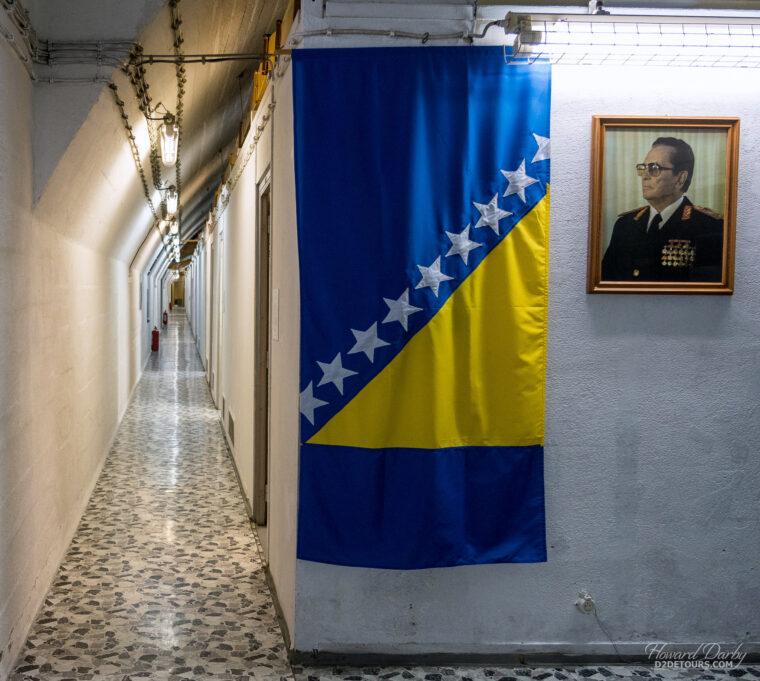
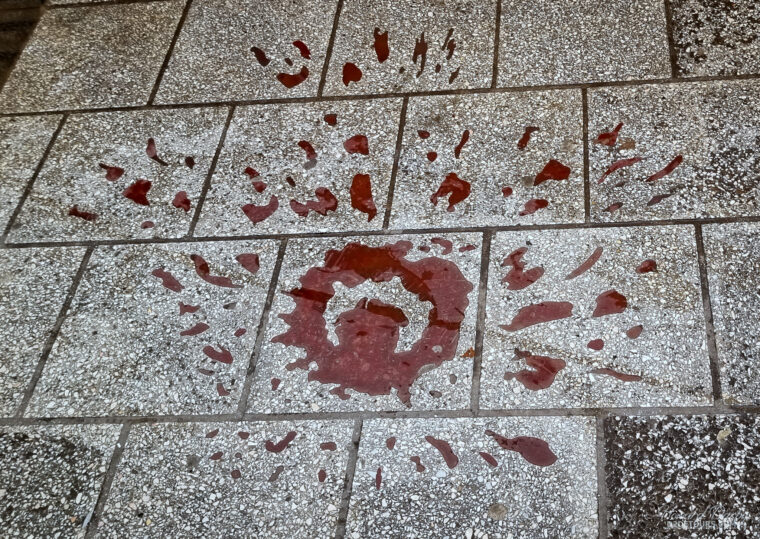
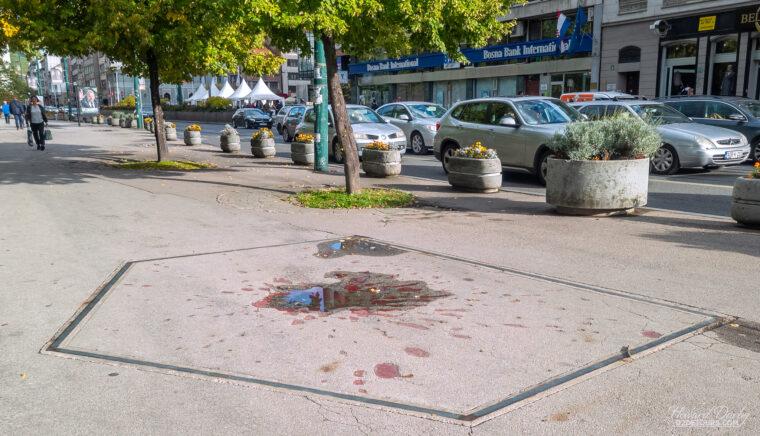
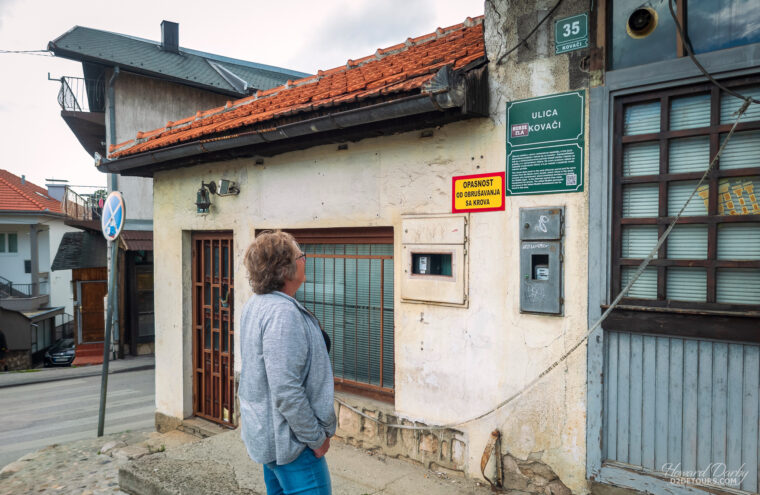
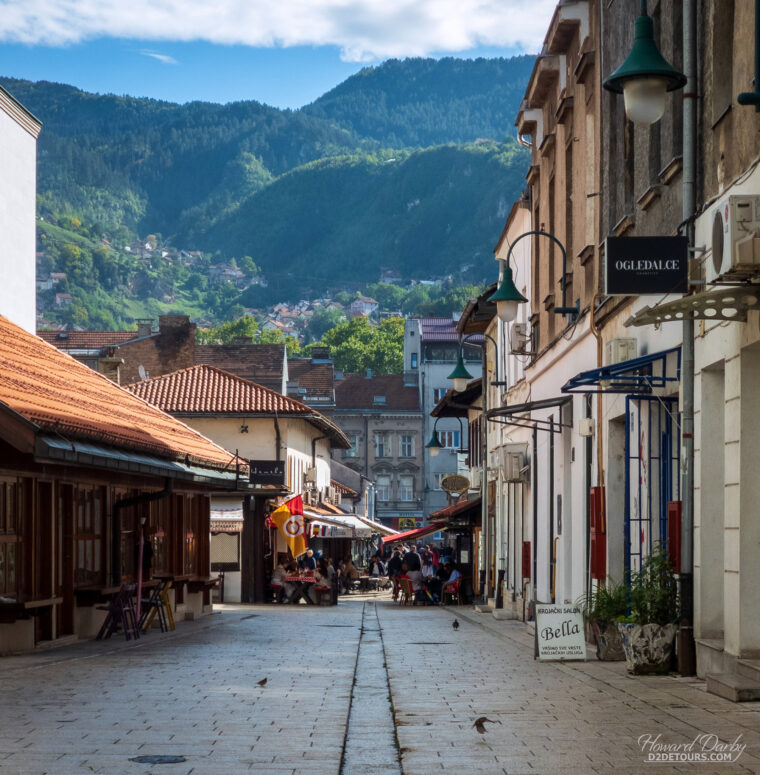
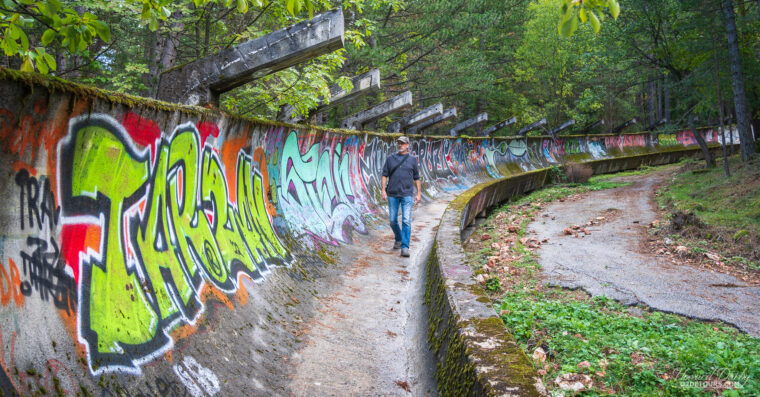
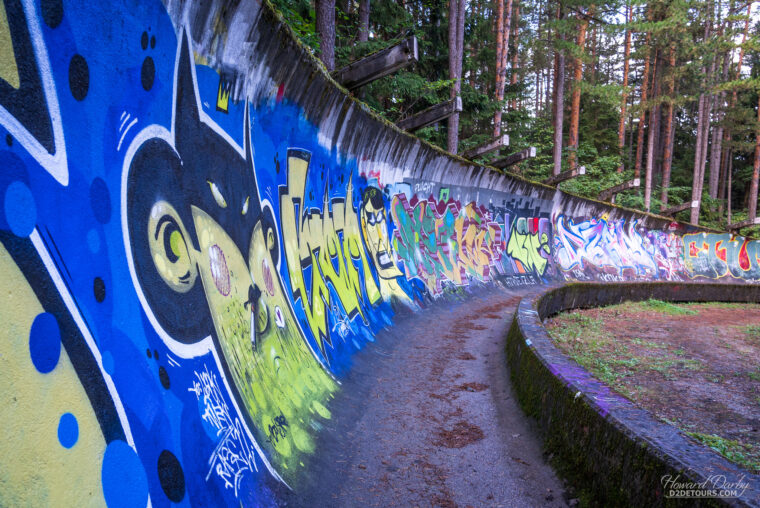
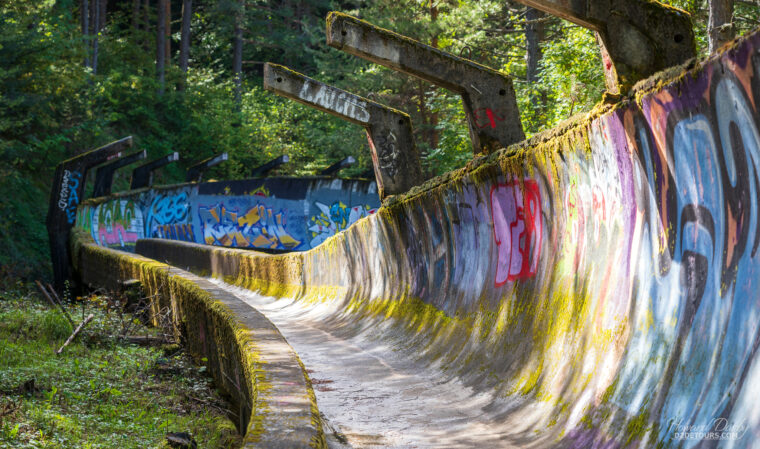
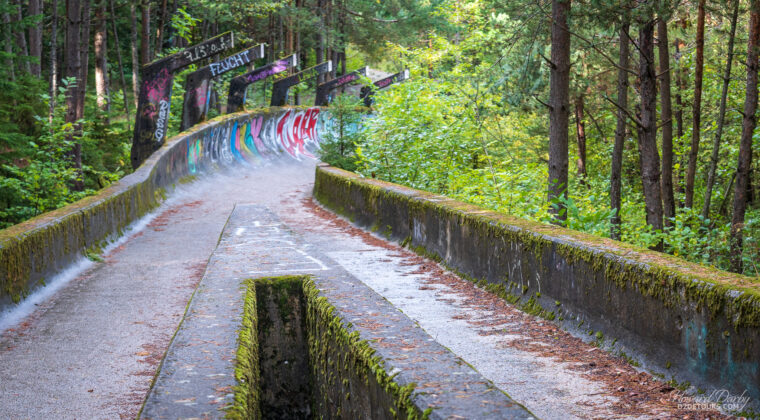
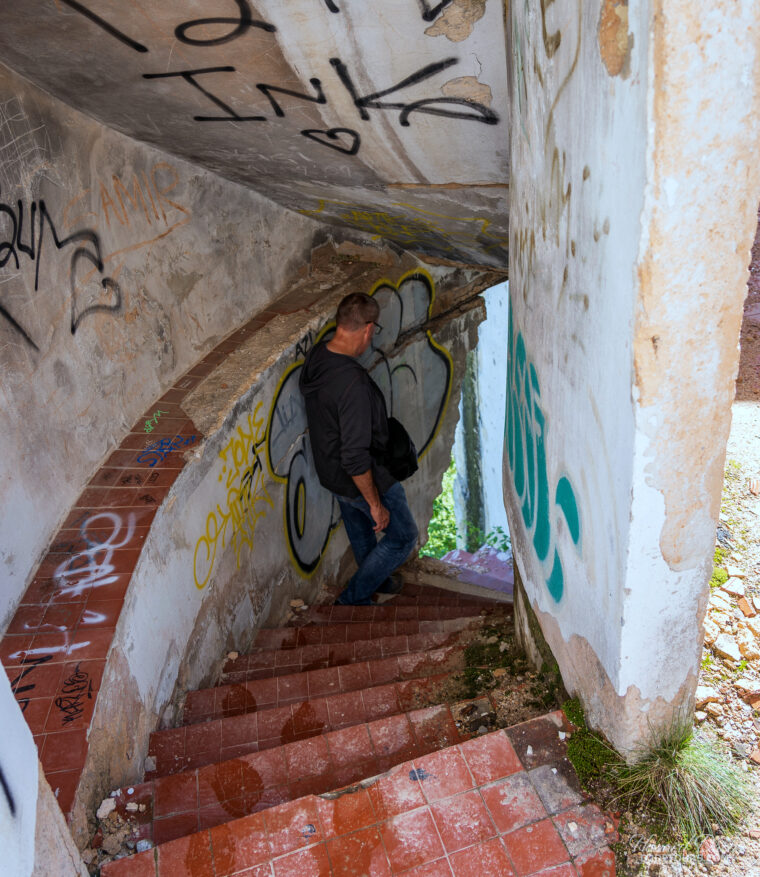
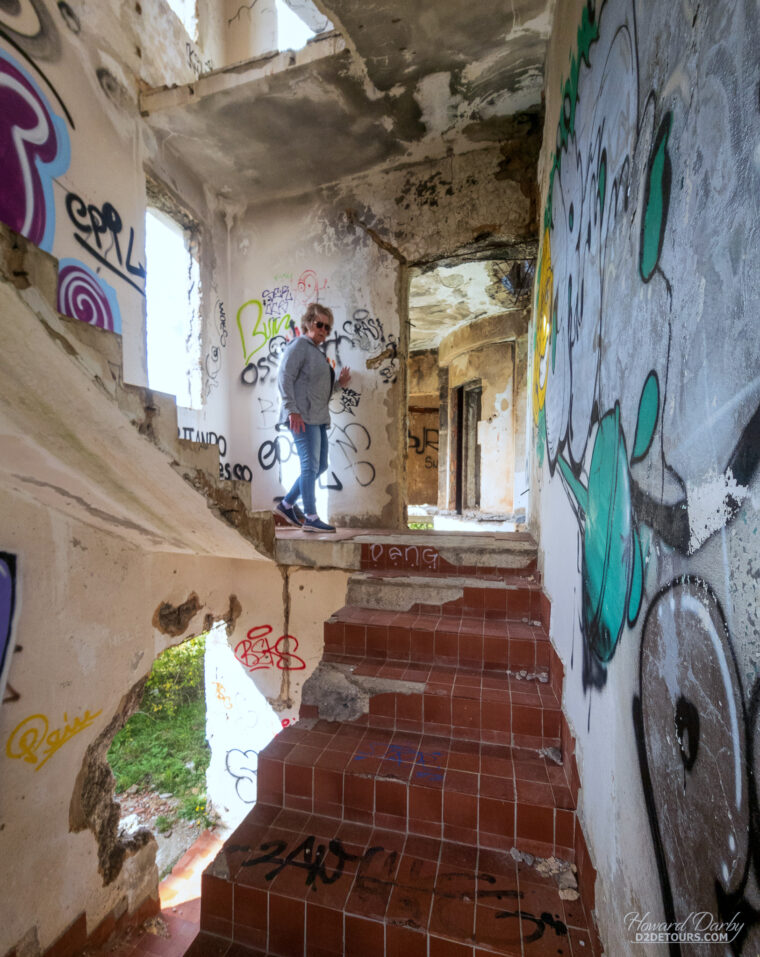
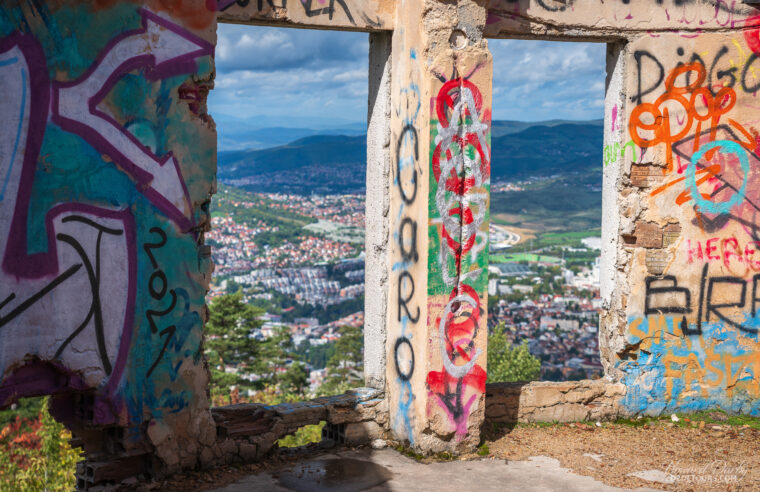
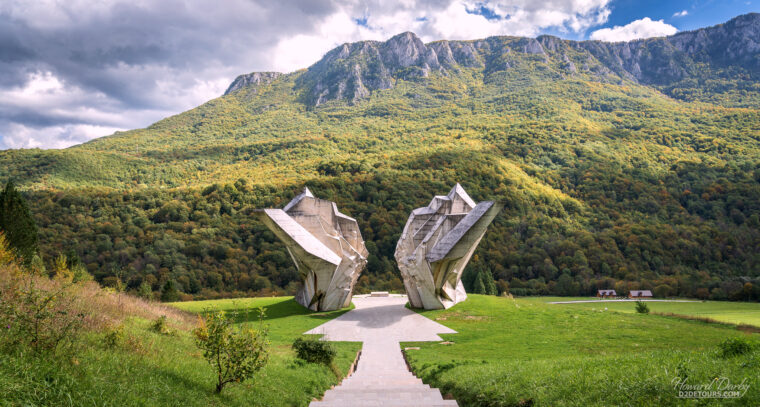
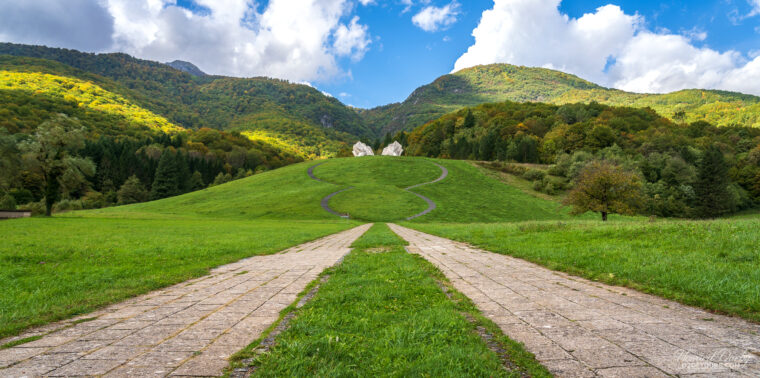
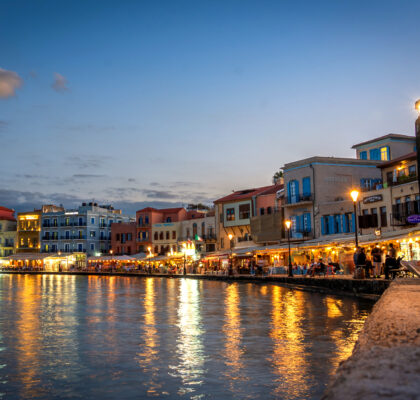
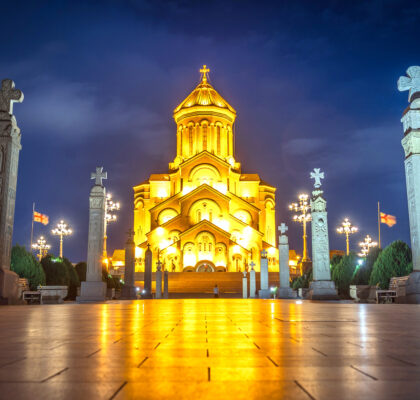
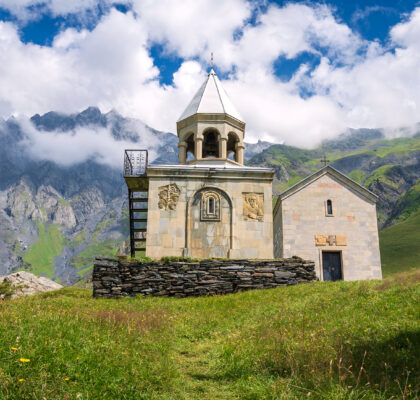
Pingback: Abandoned Places: They're Some of our Favorite Travel Spots! - D2 Detours